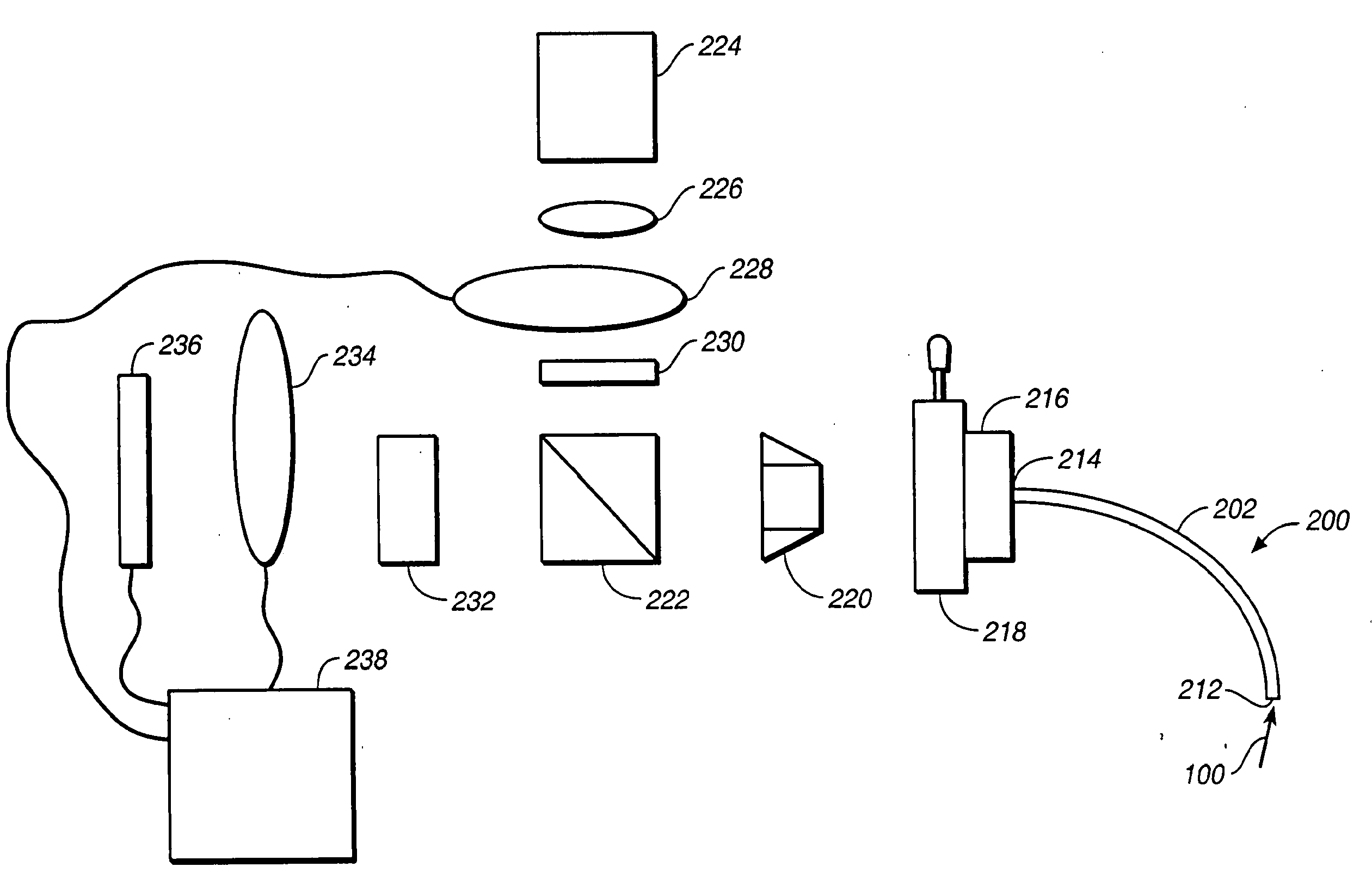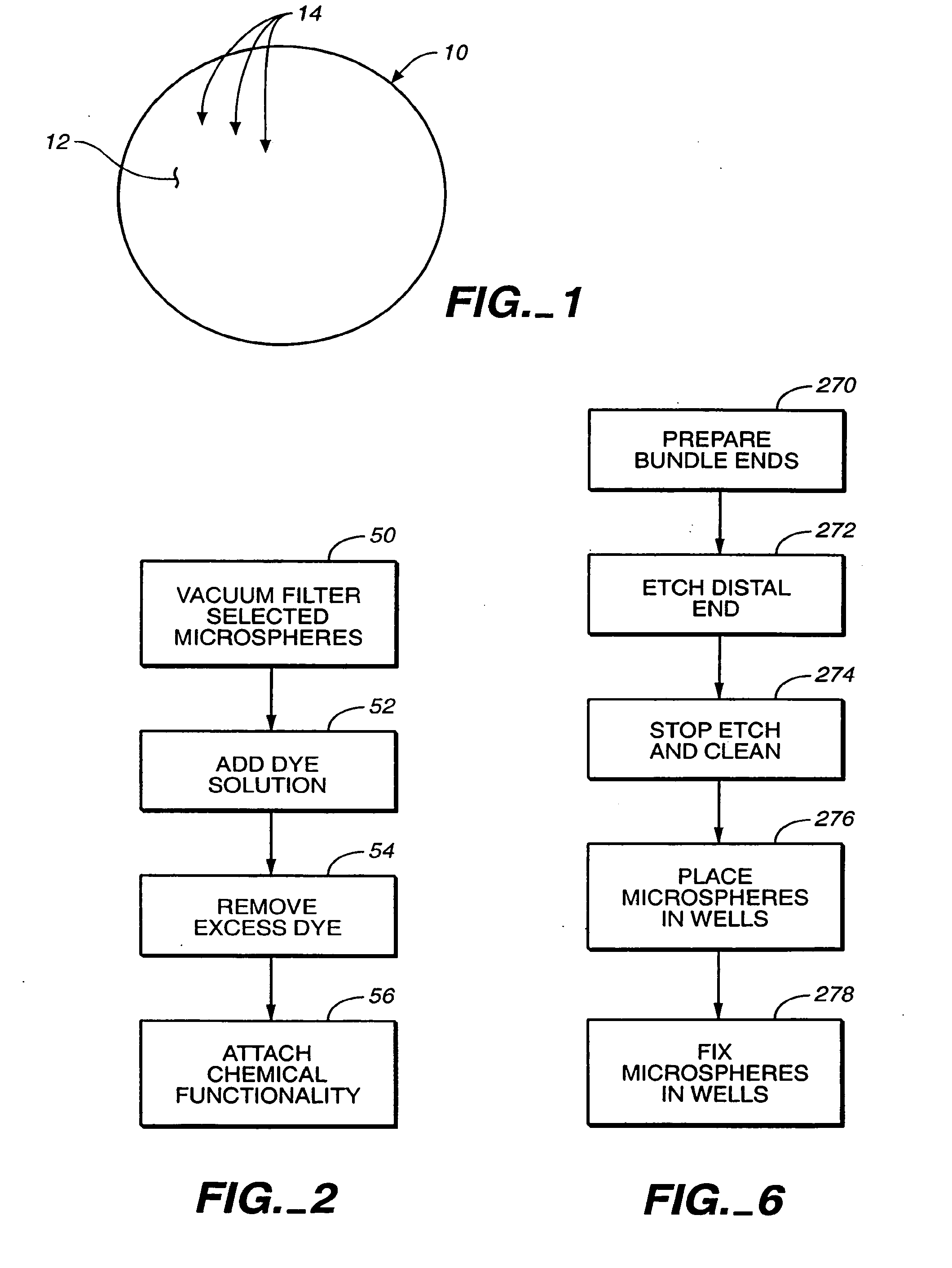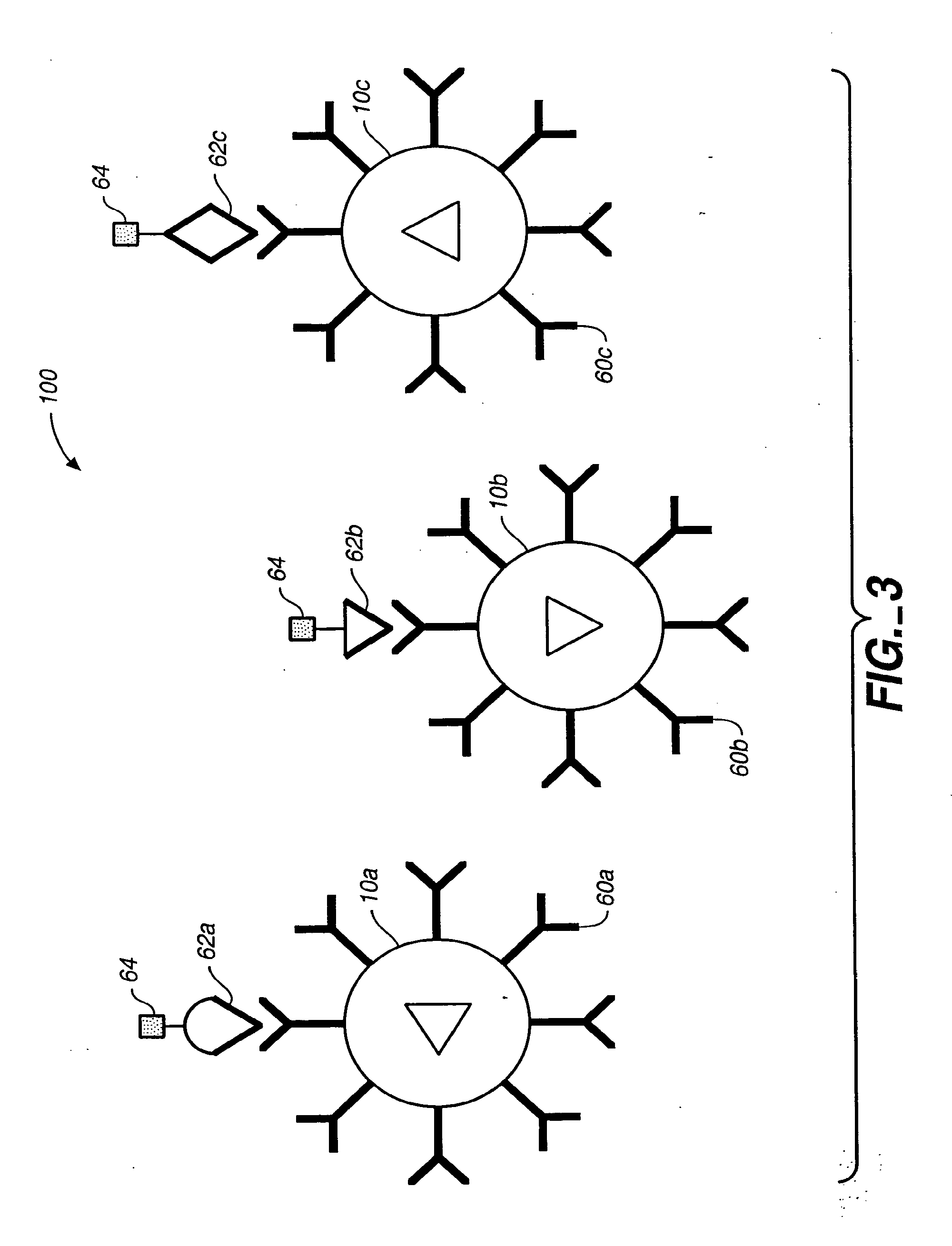Methods for detecting target analytes and enzymatic reactions
a technology of enzymatic reactions and target analytes, which is applied in the field of methods for detecting target analytes and enzymatic reactions, can solve problems such as difficulty in applying the various chemistries associated with chemical functionalities
- Summary
- Abstract
- Description
- Claims
- Application Information
AI Technical Summary
Benefits of technology
Problems solved by technology
Method used
Image
Examples
example 1
Enzyme-Based Sensor
Subpopulation A
[0195]Bioactive agent: Alkaline phosphatase
[0196]Target substrate: fluorescein diphosphate (FDP)
[0197]Reported dye ratio: 1:1 ratio of DilC:TRC, where DilC is 1,1′,3,3,3′,3′-hexamethyl-indodicarbocyanine iodide and TRC is Texas Red cadaverine
[0198]A range of ratios of light intensities are selected that are representative of the optical signature for the dye ratio of the subpopulation based on the quantum yield of the two dyes. The optical signature for this subpopulation is:
[0199]ilC λ intensity-ave.DilC background=0.847±0.23
[0200]TRC λ intensity-ave.TRC background
Subpopulation B
[0201]Bioactive agent: B-Galactosidase;
[0202]Target substrate=fluorescein di-B-galactopyranoside (FDG)
[0203]Reporter dye ratio: 10:1 ratio of DilC:TRC which translates to an optical signature of:
[0204]DilC λ intensity-ave.DilC background=4.456±1.27
[0205]TRC λ intensity-ave.TRC background
Subpopulation C
[0206]Bioactive agent: B-glucuronidase
[0207]Target substrate=fluorescein ...
PUM
| Property | Measurement | Unit |
|---|---|---|
| sizes | aaaaa | aaaaa |
| sizes | aaaaa | aaaaa |
| sizes | aaaaa | aaaaa |
Abstract
Description
Claims
Application Information
 Login to View More
Login to View More - R&D
- Intellectual Property
- Life Sciences
- Materials
- Tech Scout
- Unparalleled Data Quality
- Higher Quality Content
- 60% Fewer Hallucinations
Browse by: Latest US Patents, China's latest patents, Technical Efficacy Thesaurus, Application Domain, Technology Topic, Popular Technical Reports.
© 2025 PatSnap. All rights reserved.Legal|Privacy policy|Modern Slavery Act Transparency Statement|Sitemap|About US| Contact US: help@patsnap.com



